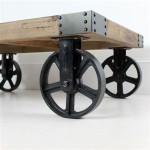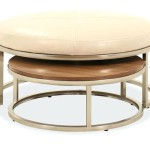Types of Table Service and Their Definitions
Table service encompasses the various methods employed by restaurants and other dining establishments to serve food and beverages to customers. Understanding the different types of table service empowers both diners and staff to appreciate the nuances of dining experiences and their corresponding expectations. This article provides an overview of common table service styles, outlining their distinctive features and benefits.
1. American Service
American service, also known as "plate service," is the most prevalent and familiar form of table service in the United States and many other parts of the world. This style is characterized by its focus on individual plates, with food prepared and presented in the kitchen before being delivered directly to the customer's table.
Here's a breakdown of American service:
- Food Preparation: Dishes are fully cooked and plated in the kitchen.
- Serving: Waitstaff bring individual plates to each diner, typically from the left side of the guest.
- Pace of Service: American service tends to be efficient, allowing for a faster pace of dining.
- Typical Settings: American service is commonly found in casual and mid-range dining establishments, including family restaurants, cafes, and bistros.
American service prioritizes efficiency and convenience, making it a suitable choice for a wide range of dining experiences.
2. French Service
French service, also known as "silver service," is a more formal and elegant style of table service. It involves a greater level of interaction between the waitstaff and diners and emphasizes presentation and finesse.
Characteristics of French service include:
- Food Preparation: Dishes often arrive at the table in chafing dishes, allowing for a theatrical presentation and ensuring that food remains hot.
- Serving: Waitstaff typically use silver serving pieces to portion and present food to diners. This often involves skillful maneuvering of plates and platters.
- Pace of Service: French service is slower and more deliberate, prioritizing a leisurely and refined dining experience.
- Typical Settings: French service is often found in upscale, fine dining establishments, where attention to detail is paramount.
The formality and theatricality of French service create a sense of occasion and enhance the overall dining experience.
3. Russian Service
Russian service is another elegant and formal style of table service known for its intricate and precise procedures. It shares similarities with French service but introduces additional layers of complexity and choreography.
Key aspects of Russian service include:
- Food Preparation: Just like in French service, dishes are often presented in chafing dishes. However, Russian service takes this a step further by employing dedicated service plates for each dish.
- Serving: Waitstaff carry multiple platters with food, carefully maneuvering them around the table. They use silver serving spoons and forks to portion food onto individual plates at the table.
- Pace of Service: Russian service is even more deliberate and leisurely than French service, with an emphasis on grace and precision.
- Typical Settings: Russian service is primarily found in high-end restaurants and formal events where a refined and theatrical dining experience is sought after.
The formality and elaborate procedures of Russian service create a truly luxurious and unforgettable dining experience.
4. English Service
English service, sometimes referred to as "family style," is a semi-formal style of table service that encourages a more communal dining experience. It combines elements of both American and French service, offering a balance between efficiency and presentation.
Key features of English service include:
- Food Preparation: Dishes are typically prepared and arranged on platters or serving dishes in the kitchen.
- Serving: Waitstaff present platters or serving dishes to the table, allowing diners to help themselves. This creates a more interactive and collaborative dining experience.
- Pace of Service: English service allows for a more relaxed pace of dining, allowing guests to enjoy conversations and share the dishes amongst themselves.
- Typical Settings: English service may be found in various types of restaurants, from casual eateries to fine dining establishments, depending on the desired atmosphere and the type of cuisine being served.
English service fosters a sense of community and sharing, making it suitable for both intimate gatherings and larger groups.
5. Buffet Service
Unlike the previously discussed types of table service, buffet service is characterized by self-service. It involves the presentation of a variety of food options in a buffet line, allowing diners to choose what they want and serve themselves.
Key elements of buffet service include:
- Food Preparation: Food is typically prepared in advance and displayed in serving dishes, chafing dishes, or other appropriate containers.
- Serving: Diners traverse the buffet line, selecting their desired dishes and portioning them onto their plates.
- Pace of Service: Buffet service offers a very flexible pace, allowing guests to dine at their own speed and choose from a variety of options.
- Typical Settings: Buffet service is prevalent in various settings, including hotels, restaurants, and catered events.
Buffet service is a casual and efficient way to serve large groups, offering variety and flexibility to diners.
6. Counter Service
Counter service, also known as fast food service, is a streamlined and efficient style of service typically found in fast food restaurants and cafes. It prioritizes speed and convenience over formality.
Key characteristics of counter service include:
- Food Preparation: Food is typically prepared quickly and efficiently, often using standardized procedures and pre-made components.
- Serving: Customers order their food at a counter, often with the assistance of a cashier or order-taker. Food is usually delivered to the customer immediately after it is prepared.
- Pace of Service: Counter service is designed for speed, aiming to serve customers efficiently and quickly.
- Typical Settings: Counter service is ubiquitous in fast food restaurants, cafes, and some casual dining establishments with a focus on quick turnaround times.
The emphasis on speed and convenience makes counter service an ideal option for diners seeking a quick and affordable meal.
By understanding the different types of table service, diners can better appreciate the nuances of their dining experiences, while service staff can cater to the specific needs and expectations of their customers. Each type of service brings its own unique set of benefits and considerations, from the formality and presentation of silver service to the speed and convenience of counter service. The choice of service style ultimately depends on the dining establishment, its cuisine, and the desired dining experience.

Table Service Styles Placements And Functions Polo Tweed

Table Setting Diagrams Formal Fine Casual More Set Ups

Types Of Service And Table Settings In Waiter Waitress Training

Table Setting Diagrams Formal Fine Casual More Set Ups

Proper Table Setting 101 Everything You Need To Know Emily Post

Table Setting Diagrams Formal Fine Casual More Set Ups

Proper Table Setting 101 Everything You Need To Know Emily Post

Proper Table Setting 101 Everything You Need To Know Emily Post

Dining Etiquette Kent State University

Proper Table Setting 101 Everything You Need To Know Emily Post
Related Posts








